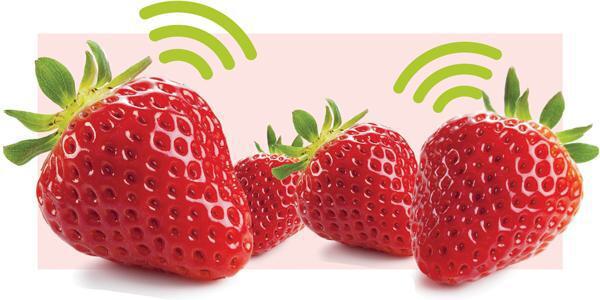Wireless Sensors Set to Improve Strawberry Farming
by Lauren BrownTrying to harvest a successful crop of strawberries could make any farmer go bananas. They’re a fussy fruit, susceptible to frost, disease, mold and bugs.
But they’re also in high demand, with the U.S. producing more than 36 million pounds of strawberries in 2012.
Professor John Lea-Cox in the Department of Plant Science and Landscape Architecture is leading a team of Maryland researchers as part of an effort among 12 land-grant universities to help farmers navigate these difficulties and grow a better berry.
Through the National Strawberry Sustainability Initiative, funded by the Walmart Foundation, the UMD team has placed wireless sensor networks on three Maryland farms: alumni-owned Butler’s Orchard in Germantown, Shlagel Farms in Waldorf and the university’s Wye Research and Education Center in Queenstown.
Radio nodes with sensors have been installed in the soil, the plant canopy and weather stations, collecting precise data on environmental conditions, soil moisture and temperature and fertilizer concentration. Farmers can access this data from their fields in real time using a computer, smartphone or any other device connected to the Internet.
“Providing farmers with their own information is critical to them making good decisions and can save them a lot of time and effort where labor, frost protection, irrigation and nutrient management are involved,” Lea-Cox says. “We believe we can make a tremendous difference for strawberry producers in terms of conserving resources, reducing costs and improving sustainable production practices.”
FOR MORE INFORMATION and to follow the project’s progress, visit sensingberries.net.
Issue
Spring 2015